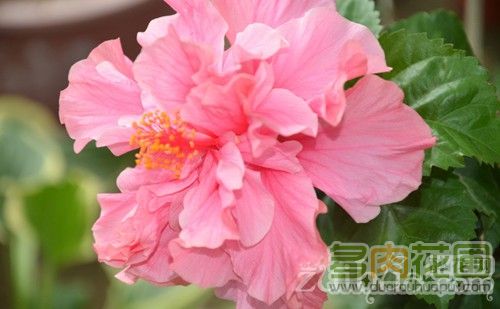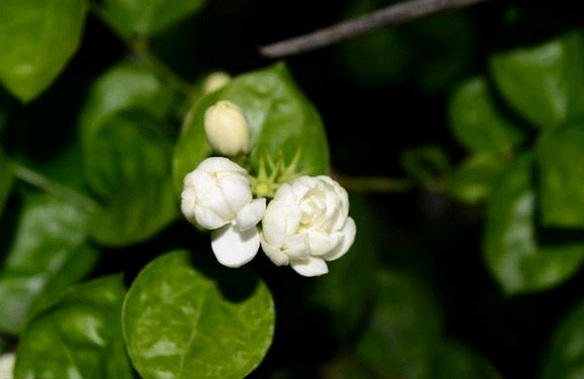What about the rotten roots and buds of the peony?
What about the rotten roots and buds of the peony? To prevent peony from rotting roots and falling buds, the following measures can be taken:
(1) watering and fertilizing should be timely and appropriate. As the peony is a fleshy root, afraid of waterlogging, so it is not easy to water, it is not suitable to water, especially afraid of stagnant water, otherwise easy to rot roots and leaves. Reasonable watering should be dry and wet, and fertilization should not be much. in addition to basic fertilizer, dilute liquid fertilizer can be applied every two months or so, dry fertilizer should be applied once in summer, and bone powder and phosphate fertilizer should be added at flowering stage.
(2) loose, fertile and well-ventilated soil should be selected to prevent stagnant water in the basin.
(3) pruning in time, peony should be pruned once after blooming. Too many branches, too many flower buds, consume a lot of nutrients, affect the flowering of the next year, even if it can blossom, it is easy to drop buds.
(4) it is not easy to leave the room too early. In early spring, the potted peonies are moved outdoors prematurely, and the buds turn yellow and fall off easily when they encounter cold air or cold current.
Prevention and control of rotten roots and buds of peony
Peonies prefer warmth to heat, cool climate to cold, moist but not waterlogging, sunshine and fear of strong summer exposure. Peony is a fleshy root, suitable for fertile, well-drained neutral or slightly acidic sandy soil. If the above-mentioned ecological conditions are not available, coupled with poor management, it will cause rotten roots and buds of peonies. The following preventive measures should be taken. 1. Watering and fertilizing should be timely and appropriate. As the peony is a fleshy root, afraid of waterlogging, so it is not easy to water, it is not suitable to water, especially afraid of stagnant water, otherwise easy to rot roots and leaves. Reasonable watering should be dry and wet. Fertilization should not be more, in addition to base fertilizer, dilute liquid fertilizer can be applied every 2 months or so, dry fertilizer should be applied once in summer, bone powder and phosphate fertilizer should be added at flowering stage. 2. Choose loose, fertile and well-ventilated soil. Prevent stagnant water in the basin. 3. Pruning in time, peony should be pruned once after blooming. Too many branches, too many flower buds, consume a lot of nutrients, affect the flowering of the next year, even if it can blossom, it is easy to drop buds. 4. It is not easy to leave the room too early. Early spring prematurely moved the potted peonies outdoors, suddenly encountered cold air or cold current, the buds are easy to yellowing and falling off.
It is not difficult to control rotten roots and buds of peony.
Peonies prefer warmth to heat, cool climate to cold, moist but not waterlogging, sunshine and fear of strong summer exposure. Peony is a fleshy root, suitable for fertile, well-drained neutral or slightly acidic sandy soil.
If the above-mentioned ecological conditions are not available, coupled with poor management, it will cause rotten roots and buds of peonies. The following preventive measures should be taken.
1. Watering and fertilizing should be timely and appropriate. As the peony is a fleshy root, afraid of waterlogging, so it is not easy to water, it is not suitable to water, especially afraid of stagnant water, otherwise easy to rot roots and leaves. Reasonable watering should be dry and wet. Fertilization should not be more, in addition to base fertilizer, dilute liquid fertilizer can be applied every 2 months or so, dry fertilizer should be applied once in summer, bone powder and phosphate fertilizer should be added at flowering stage.
2. Choose loose, fertile and well-ventilated soil. Prevent stagnant water in the basin.
3. Pruning in time, peony should be pruned once after blooming. Too many branches, too many flower buds, consume a lot of nutrients, affect the flowering of the next year, even if it can blossom, it is easy to drop buds.
4. It is not easy to leave the room too early. Early spring prematurely moved the potted peonies outdoors, suddenly encountered cold air or cold current, the buds are easy to yellowing and falling off.
The latest information
Soilless cultivation of Golden bergamot High yield techniques of cut Rose in Winter in North China
Several methods of Cuttage Propagation of Tree species that are difficult to take Root
- Prev

How to raise mulberry
How to raise mulberry, also known as hibiscus peony, its habits like warmth, sun and fear of cold, but also not resistant to drought, lax requirements on the soil, loose, fertile soil is appropriate. In order to make the mulberry flowers bloom brightly, it is necessary to do a good job in the following aspects of management: (1) lighting. Fusang likes plenty of sunshine and leaves the room in April.
- Next

What if the jasmine doesn't bloom?
What if the jasmine does not bloom? summer is the good season for jasmine to blossom. If the jasmine does not blossom at this time, the main reasons are as follows: (1) the pot soil is alkaline. Jasmine is rich in humus and loose slightly acidic soil, which can be prepared with pond mud, vegetable garden soil and rice husk ash at 3:4:3.
Related
- Fuxing push coffee new agricultural production and marketing class: lack of small-scale processing plants
- Jujube rice field leisure farm deep ploughing Yilan for five years to create a space for organic food and play
- Nongyu Farm-A trial of organic papaya for brave women with advanced technology
- Four points for attention in the prevention and control of diseases and insect pests of edible fungi
- How to add nutrient solution to Edible Fungi
- Is there any good way to control edible fungus mites?
- Open Inoculation Technology of Edible Fungi
- Is there any clever way to use fertilizer for edible fungus in winter?
- What agents are used to kill the pathogens of edible fungi in the mushroom shed?
- Rapid drying of Edible Fungi

